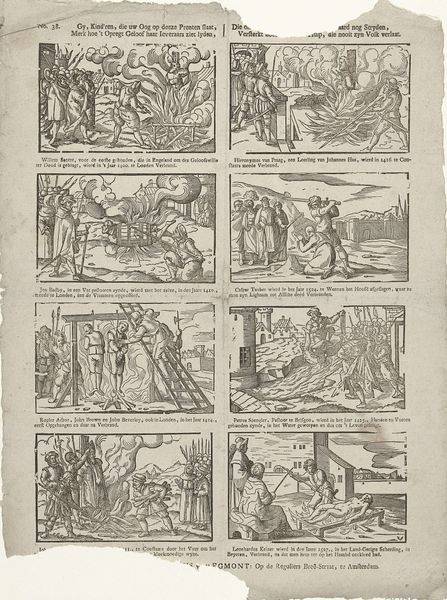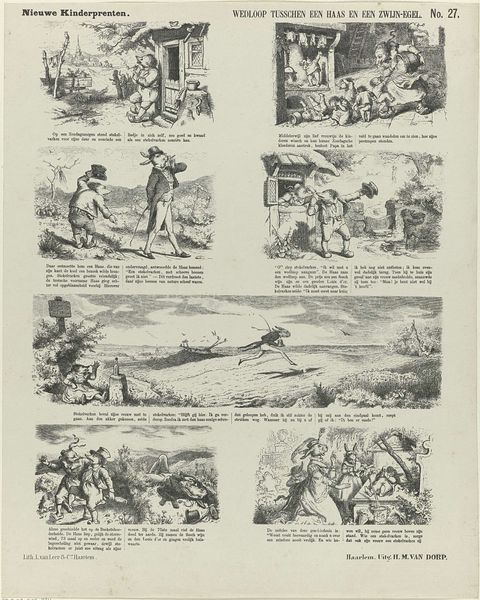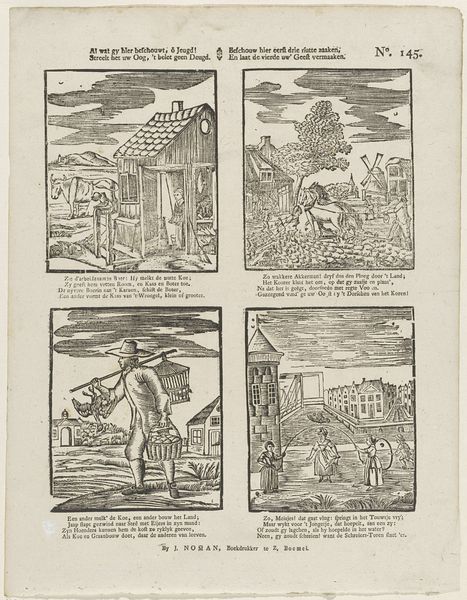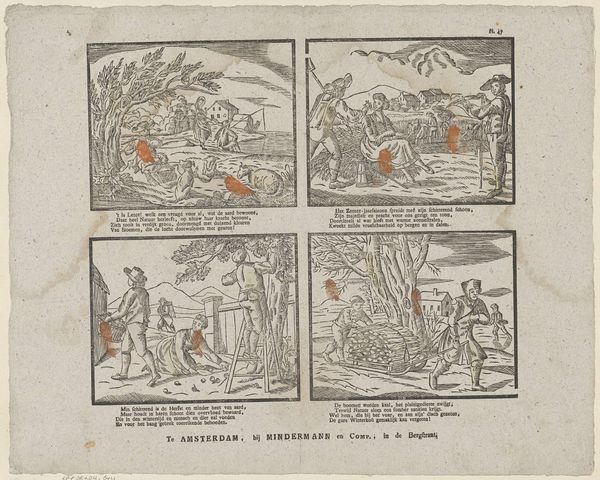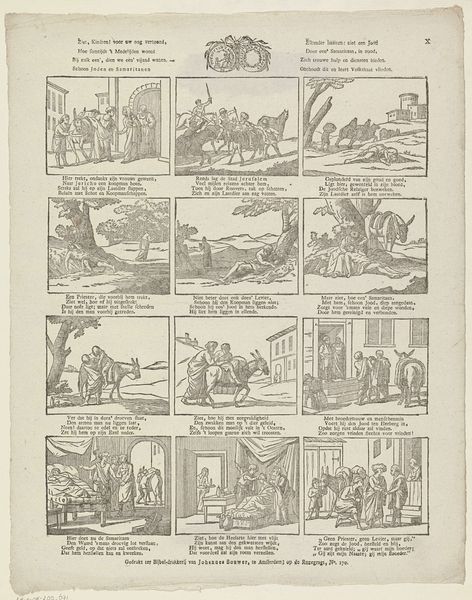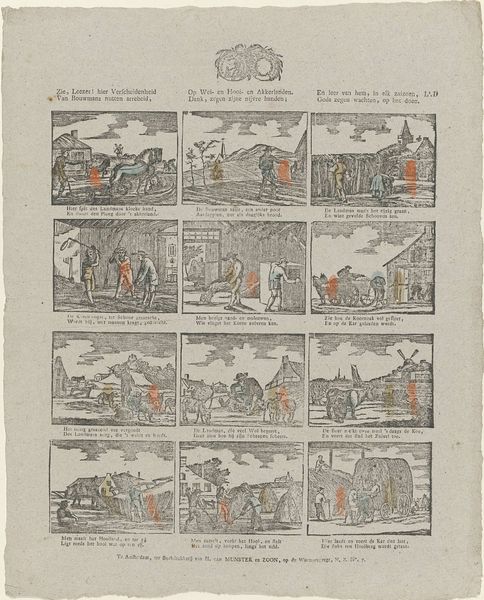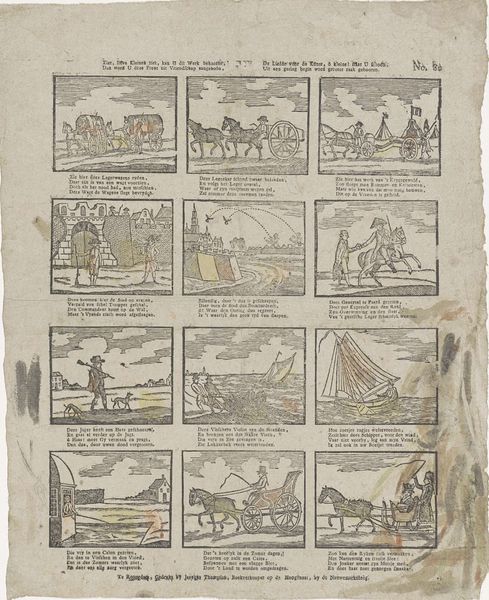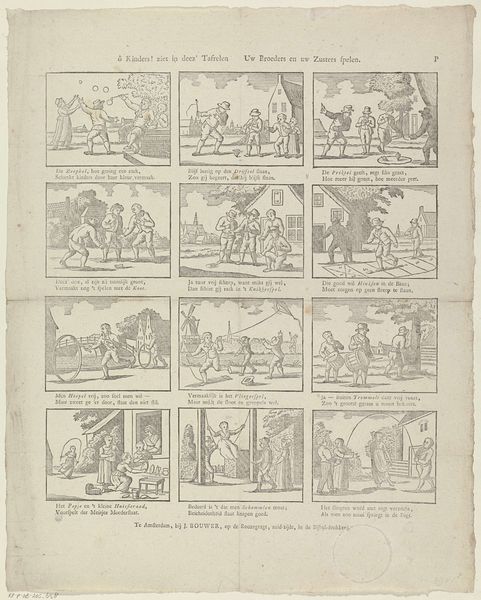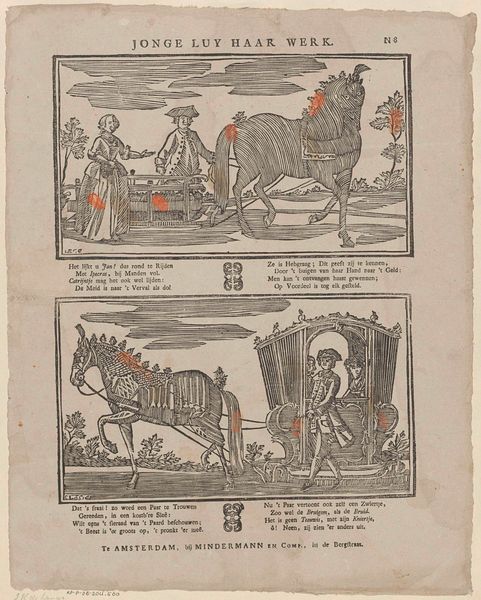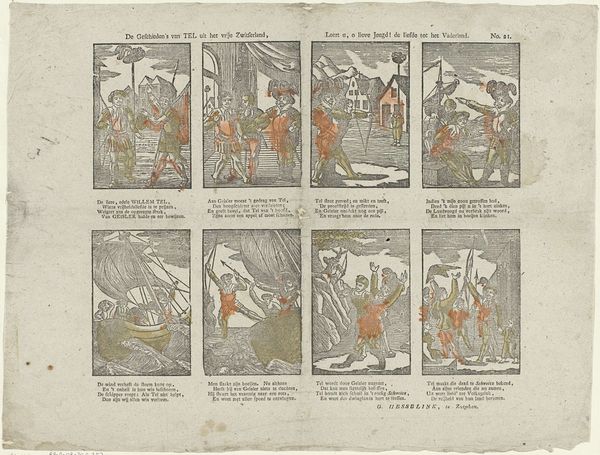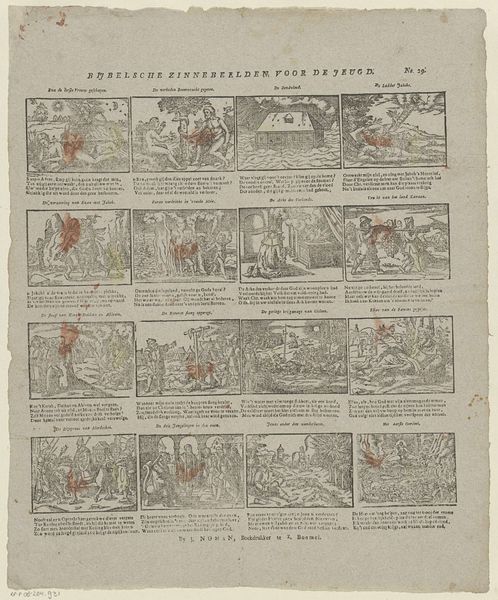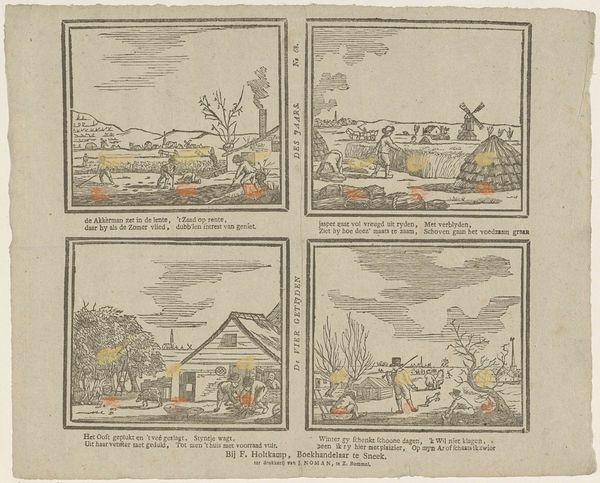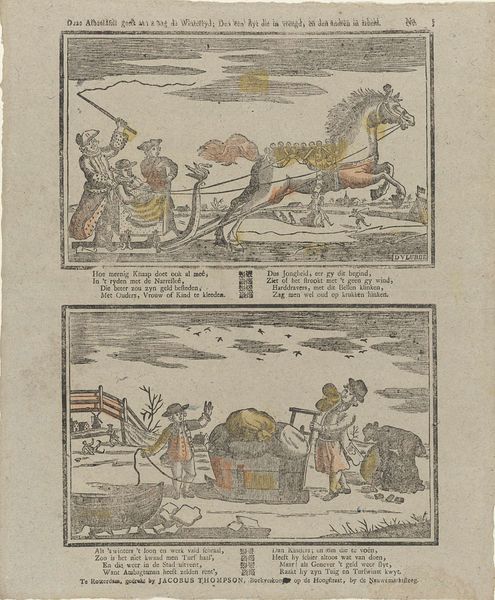
drawing, print, ink, engraving
#
drawing
#
narrative-art
# print
#
landscape
#
ink
#
genre-painting
#
engraving
Dimensions: height 415 mm, width 325 mm
Copyright: Rijks Museum: Open Domain
Curator: I’m struck by the stark contrast in this print. The dark lines carving out these violent hunting scenes against the bright paper—it's incredibly evocative. Editor: Yes, "Jachttaferelen," or "Hunting Scenes," created sometime between 1822 and 1849. The Rijksmuseum holds this piece, attributed to I.I. de Lanier. It’s an engraving, combining line work with, seemingly, text elements… let's explore those social implications a bit further, shall we? Curator: Immediately I am curious about the conditions of labor used in production of these types of artworks for sale, because the prints suggest it was for mass consumption. Given the date and subject matter, it’s tempting to ask what the work itself consumed in materials and labor; how were these engravings disseminated? Editor: Interesting. I look at this image differently: note the triptych arrangement. Three separate but connected vignettes, each showcasing a different stage or style of the hunt, from ambush to the hounds in pursuit, really speaks to the cultural significance placed on the ritual of the hunt at this time, yes? Genre painting allowed a burgeoning urban population glimpses into upper-class culture. Curator: True. We should not forget that engraving involves very specialized tools and practices; I wonder what type of workshop produced these prints. Was it small, family-owned studio or a large, more industrialized operation? What was the system in place in Amsterdam for art production at that time? These factors affect both aesthetic outcomes, and more granular realities such as economic relations in Amsterdam... Editor: Exactly; now it’s hanging in the Rijksmuseum as part of their permanent collection—a far cry from its initial context and purpose. Now considered fine art. Do you think its current placement influences our perception? Curator: Without a doubt! By preserving this engraving within its walls and safeguarding access today the Rijksmuseum plays a part in shaping—perhaps legitimizing or cementing—the dominant historical narrative concerning Dutch cultural life. Editor: Indeed. Viewing these prints helps us remember the powerful social institutions that curate memories.
Comments
No comments
Be the first to comment and join the conversation on the ultimate creative platform.
